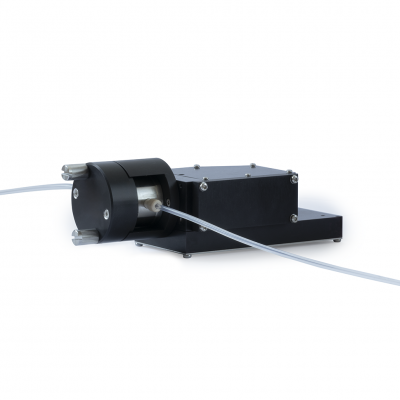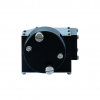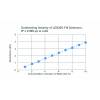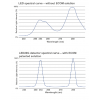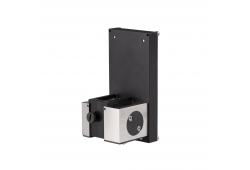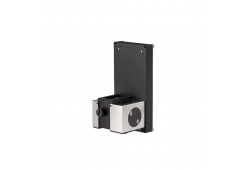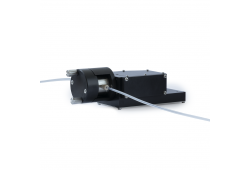LED20G Dual UV Detector
LED20G Dual UV detector for preparative and flash chromatography. ECOM's unique patented technology radically improves the detectors´ features. LEDs are used as the source of light.
- Description
- Parameters
- Files to download 1
LED20G Dual UV LED detector for preparative and flash liquid chromatography. LEDs (Light Emitting Diodes) are used as the light source. A unique and patented ECOM technology radically improves the detector characteristics.
The LEDs themselves typically have a peak wavelength with a tolerance of +/- 5 nm and a spectral half-width of 10-20 nm, which is unacceptable for some applications, as e.g., for FPLC. This ECOM solution, however, allows the spectral width to be narrowed and, thanks to our patented technology, the exact wavelength to be selected from the LED spectrum.
This version of the dual UV detector measures at two fixed wavelengths, as determined by the installed LEDs.
The default wavelengths are 254 and 280 nm. Optionally, the customer can select a wavelength in the range 254-600 nm in 1 nm steps.
The unit is controlled by an innovative printed circuit board that powers the LEDs, controls the unit, and features several new enhancements, including a higher sampling speed.
Highlights of the LED20G detectors
Key features and benefits of LED20G detectors:
• Sharp, high, and symmetrical peaks thanks to the ECOM patented technology
• Excellent linearity
• Excellent price-performance ratio
• Compact device dimensions
• Low cell heating due to LED's low power supply (0.7 W) allows use for peptide analysis or FPLC
• Easy flow cell replacement
• Higher sampling speed
• Sophisticated diagnostic software
• Diodes with wavelengths of 254 and 280 nm and a PFC cell with an optical path length of 2 mm are used as standard. Other cells and wavelengths on request.
| Number of channels (Signals) | Two fix wavelength |
|---|---|
| Typical spectral half-width | 4 |
| Light source | LEDs |
| Noise level at test cell (254 nm, TC 0.75 s) | ± 10x10-6 AU |
| Drift at test cell (254 nm after 1 h) | 1x10-3 AU/hr |
| Communication | Remote digital I/O |
| Power supply | 12-24 V DC |
| Power input | 4 W |
| Materials in contact with mobile phase | FEP; fused silica, stainless steel (cell) |
| Communication interface | USB C |
| Optical cables | no |
| Dimensions W x H x D | 193 x 70 x 40 mm (7.60 x 2.76 x 1.57 in) |
| Weight | 0.66 kg (1.46 Ibs) |
| Filename | Type |
|---|---|
| Info-LED20G_detector-en | pdf (769,89 KB) |
Related products
LED20 Single UV Detector
LED20 Single UV Detector with UV Light Emitting Diodes (LED) as the light source is an OEM built-in UV detector for preparative and flash chromatography.
LED20 Dual UV Detector
The LED20 Dual UV detector with UV Light Emitting Diodes (LED) as the light source is an OEM-built-in UV detector for preparative and flash chromatography.
LED20G Single UV Detector
LED20G Single UV detector for preparative and flash chromatography. The unique patented ECOM technology radically improves the detector characteristics. LEDs are used as the light source.


